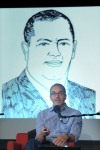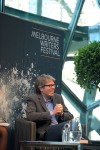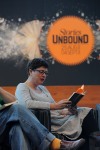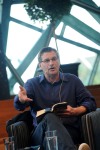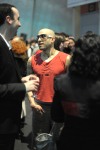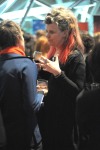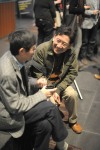Blog Archives
Best Cafes for Readers
If you’re anything like the Festival team, you love a good cup of coffee. During this high-caffeine-intake phase, known as the “campaign launch”, we thought we should share some of our favourite coffee spots with our equally caffeine addicted fans.
Thousand £ Bend
361 Little Lonsdale Street, Melbourne, VIC, 3000
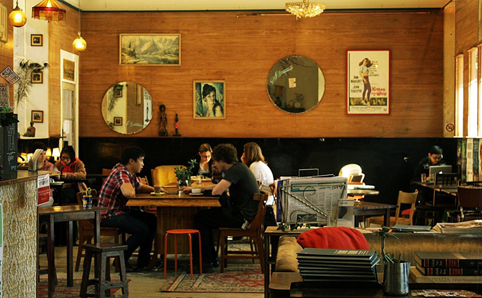
1000 £ Bend (Photo via Time Out Melbourne)
Based in an old motorcycle repair garage, Thousand £ Bend is part cafe, part gallery and part cinema. While we loath to use this cliché – this café has a decidedly vintage charm with its mismatched chairs and op-shop artefacts.
The League of Honest Coffee
8 Exploration Lane, Melbourne, VIC, 3000 (entrance on Little Lonsdale Street)
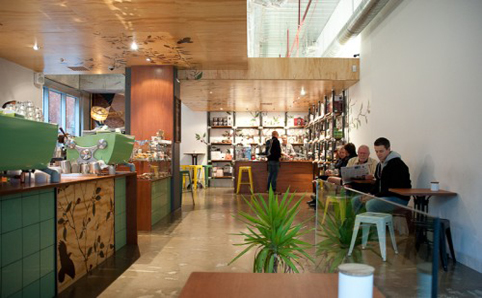
The League of Honest Coffee (Photo credit Shaun Lee via Meld Magazine)
The large square tables at The League make this spot great for groups wishing to partake in some intense discussions (read: festival program meetings). On the other hand, if you’re after a bit of privacy to finish the last few pages of your book, the cosy corner tables are an equally good option. Their coffee, which was included in The Age’s Coffee Army Top 25 Melbourne Cafes, is served in handleless mugs (or more accurately, mini bowls) .
The Moat
176 Little Lonsdale Street, Melbourne, VIC, 3000 (The Wheeler Centre basement)
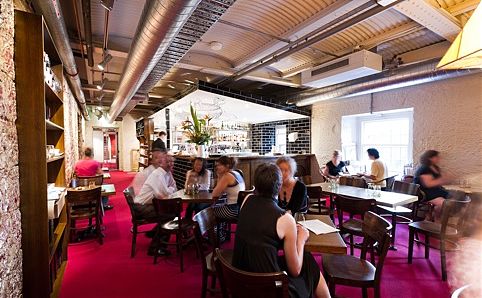
The Moat (Photo via Time Out Melbourne)
Our next-door neighbours, The Moat offers festival staff a little patch of green grass to rest on after a hard day in the office. The Moat also plays host to the odd Wheeler Centre event and literary do. Bookish types are definitely welcome.
The Journal
253 Flinders Lane, Melbourne, VIC , 3000
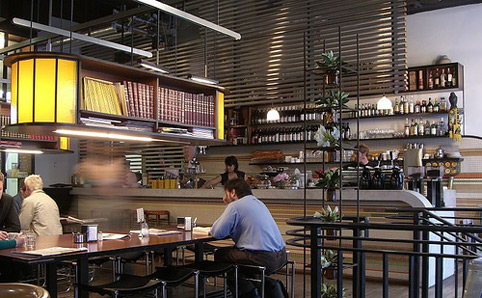
The Journal (Photo via Time Out Melbourne)
Located in the same building as CAE and the Melbourne City Library, The Journal is a good option for students and Flinders Lane lovers. Their hole-in-the-wall canteen makes getting a mid-library session snack easy. As an added bonus, if you have a Melbourne City Library account you can access their free Wi-Fi over lunch.
Manchester Press
8 Rankins Lane, Melbourne, VIC, 3000 (off Little Bourke Street)
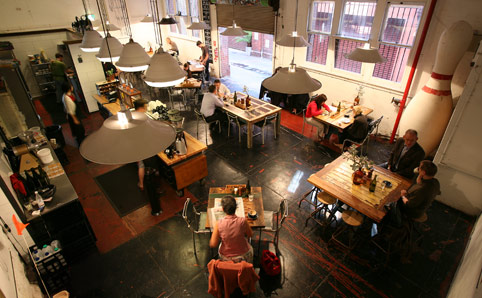
Manchester Press (Photo via Time Out Melbourne)
There’s normally a little wait at Manchester Press, the busy café tucked into a laneway off Little Bourke Street. After you’ve had your name written with chalk on the entrance wall’s bricks you’re free to enjoy your book until you’re directed to a free seat – normally at one of the large communal tables. Truth be told, we’re just amused by their latte art which can be anything from pirates to bunnies.
Reading Melbourne
I’ve been home now for a few days. After spending some weeks prodigally gadding about with other cities, I’ve needed some help against my post-holiday blues. Don’t get me wrong: I’ve always lived in Melbourne, and it has my love for now and ever. But its welcoming embrace has been winter-chilly, its kissing cheek cold, and I have needed a bit of encouragement to fall back in love with it.
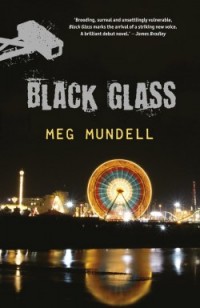 Luckily, Melbourne has no shortage of storytellers to assist with this reunion. In particular, there have recently been a few future-Melbourne books, extrapolating on existing geography and concerns to imagine a city strange and yet familiar. I recently had the pleasure of interviewing Meg Mundell, who was born in New Zealand but has lived in Melbourne for over a decade. Meg is the author of Black Glass, which envisions a near-future Melbourne (although AFL is still in evidence as the favourite sport, characters remember Cate Blanchett as an actress of yore).
Luckily, Melbourne has no shortage of storytellers to assist with this reunion. In particular, there have recently been a few future-Melbourne books, extrapolating on existing geography and concerns to imagine a city strange and yet familiar. I recently had the pleasure of interviewing Meg Mundell, who was born in New Zealand but has lived in Melbourne for over a decade. Meg is the author of Black Glass, which envisions a near-future Melbourne (although AFL is still in evidence as the favourite sport, characters remember Cate Blanchett as an actress of yore).
I read Black Glass a few months ago, but it popped up in my head again and again on my travels. A common topic in travellers’ conversations is politics; I did some patient explaining about the 2010 leadership spill to New Yorkers in dive bars, and I saw the church in Iceland that Italian Prime Minister Silvio Berlusconi disliked enough to suggest it should be bulldozed. Among all this talk of politicians, I couldn’t help but recall the government that Meg predicts for us in her novel. People who don’t have identity documentation, including children like Black Glass protagonists Tally and Grace, are unable to work legally, so they are forced into dangerous work on society’s fringes.
Not only is the government inhumanely blind to these people, but it also operates much like a corporation with a lot to lose. One character, Luella, a government official, trades newsworthy tidbits for control over how new policies will be represented by her reporter allies. When I asked Meg what Luella’s government wanted, she said: ‘To be re-elected’. This comment brought to mind not something from our possible future, but something fixed in our history: last year’s national election, in which Labor’s pre-election performance was criticised for its hollow tactics. But it’s not all doom and gloom in Black Glass. Lost as they are, Tally and Grace meet some people who help them along the way.
And it’s this idea of support and friendship for marginalised — indeed, homeless — people that first sparked the idea for Glenda 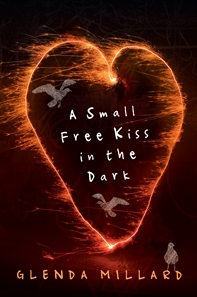 Millard’s A Small Free Kiss in the Dark, a young adult book that has been shortlisted for and won many awards. Young Skip runs away from school only to find himself in a city suddenly besieged by war. He befriends a homeless man named Billy, and an even younger boy called Max. Together they help each other to survive the onset of planes, soldiers and isolation.
Millard’s A Small Free Kiss in the Dark, a young adult book that has been shortlisted for and won many awards. Young Skip runs away from school only to find himself in a city suddenly besieged by war. He befriends a homeless man named Billy, and an even younger boy called Max. Together they help each other to survive the onset of planes, soldiers and isolation.
Though A Small Free Kiss in the Dark is set in a city that is never named, it contains hints that a Melburnian would easily take. I was moved by the little band’s pursuit of refuge through underground train passages, in a state library and in a fun fair that I had no trouble imagining as an abandoned Luna Park.
In non-fiction Melbourne reads, I’m looking forward to Sophie Cunningham’s Melbourne, due out in August.
What are your favourite Melbourne books?
Good times and hot toddies
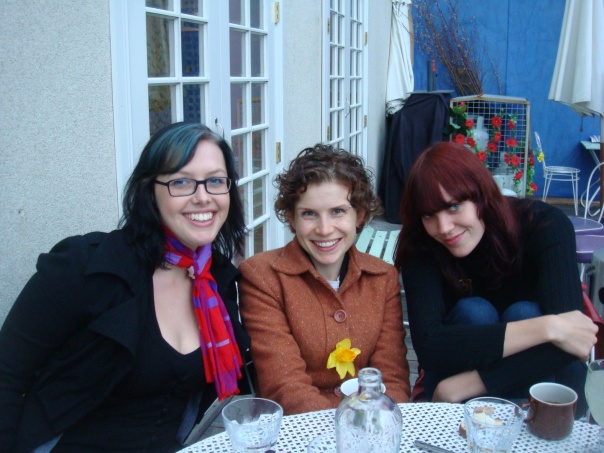
Three's a litcrowd.
I took a break after Textual Fantasies to have a drink at Madame Brussels with a little crowd of MWF guests and supporters. Above, Angela Meyer, Fiona Wright, poet and publisher at Giramondo Press and Josephine Rowe. Good times and hot toddies!




